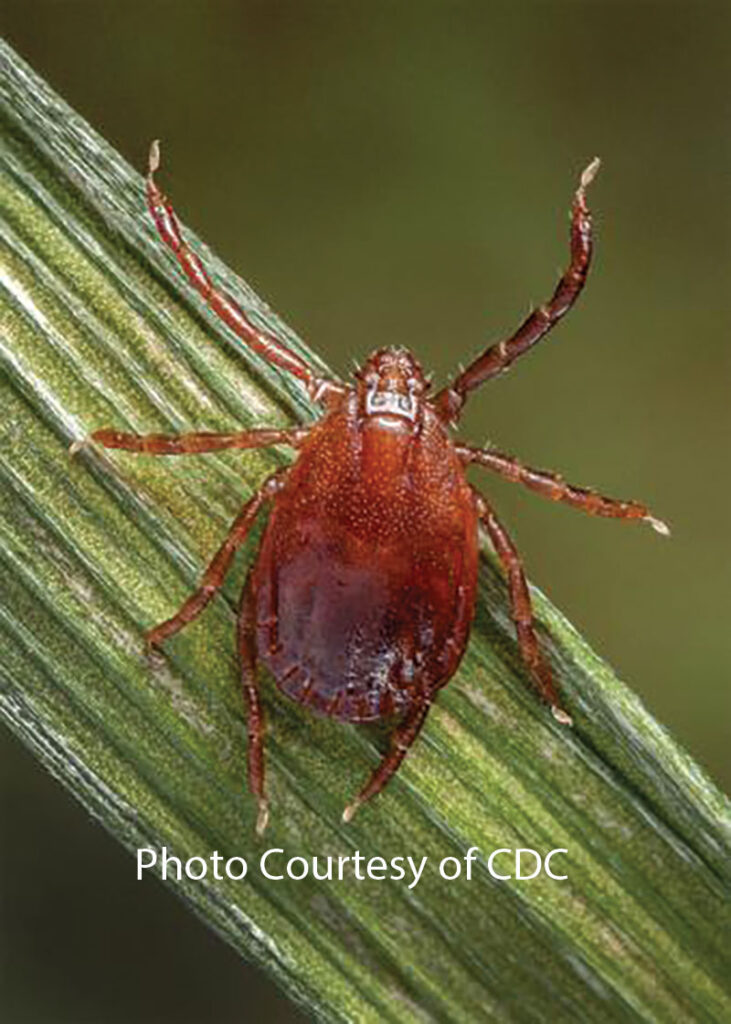
Asian longhorned ticks should be a concern for producers in the Ozarks
An invasive tick species, the Asian longhorned tick, is making its way into the Ozarks and carrying with it a potentially harmful disease. The Asian longhorned tick, also known as a bush, cattle or scrub tick, is native to eastern Asia.
The Asian longhorned tick was initially discovered in the United States in Virginia in 2017. Since then, it has made a westward expansion into 19 states, including Arkansas and Missouri. When Asian longhorned ticks are not attached to hosts, they can be found in wooded areas, tall grass and.
Recently, researchers identified the Asian longhorned tick as a vector of the disease theileriosis found in cattle. “Cattle producers and veterinarians should be aware of the new disease and its symptoms,” Kelly Loftin, Ph.D., University of Arkansas professor and entomologist, said.
Health Concerns
The Asian longhorned tick is a potential carrier for some diseases transmitted to humans and animals. “In terms of the Asian longhorned tick and potential for transmission of diseases, numerous researchers from around the country have completed several studies. And additional studies are underway,” Loftin said. “Based on our knowledge to date, the Asian longhorned tick is a potential vector of several tick-borne diseases of humans and animals.”
According to the Centers of Disease Control and Prevention, an experimental study found that the Asian longhorned tick is not likely to contribute to the spread of Lyme disease bacteria in the United States. However, another laboratory study found that the tick can transmit the bacteria that causes Rocky Mountain spotted fever.
One of the biggest health concerns regarding cattle and the Asian longhorned tick is the tick is a known primary vector of the disease theileriosis. Through its salvia, the Asian longhorned tick transmits a protozoan that infects the red and white blood cells of cattle.
The infection can cause serious symptoms even death. “Symptoms of theileriosis in cattle include weakness, jaundice, anemia and death, similar to the symptoms of anaplasmosis,” Loftin, said. “However, anaplasmosis generally affects mature cattle but with theileriosis younger cattle will become infected and show clinical signs.”
Additionally, the Asian longhorned tick exhibits a unique asexual reproduction strategy known as parthenogenesis. “This enables the female to reproduce without a male tick. A single female has the ability to produce a large population (1,000 to 2,000) of female ticks,” Loftin explained.
The tick’s ability to rapidly reproduce means the tick can be found in large numbers on cattle. “In terms of veterinary importance, the Asian longhorned tick can reach extraordinary population levels that may result in elevated stress and has been linked to exsanguination (death from blood loss) of its host,” Loftin stated.
Prevention and Detection
Currently, there is no approved treatment for animals suffering from theileriosis. However, there are steps producers can take to minimize the impact of Asian longhorned ticks on their herd. One management strategy includes quarantining and treating new animals for ticks.
There are a variety of effective prevention options. “Many of the products and methods used to control horn flies on cattle will reduce the number of attached ticks. With that in mind, whole body insecticide sprays or dips are among the best methods to control ticks on cattle but are labor intensive,” Loftin explained. Other methods producers can use to decrease the number of ticks attaching to cattle include insecticide ear tags, self-treatment devices and dusts.
Producers can detect the ticks through simple observation of their cattle, particularly as animals are going through the chute. “In addition, producers that notice unusual ticks on their animals should collect some for identification. We can certainly identify them,” Loftin added.
The Asian longhorned ticks have a few distinguishing characteristics. The adult is 2.5 mm, similar in size to the blacklegged tick but smaller than the lone star tick. “Unlike many of our native ticks, the Asian longhorned tick is void of markings and reddish-brown in color. Their mouthparts are shorter and more angular than many of our native ticks,” Loftin said. In addition, the ticks have a distinctive elevated spur or “horn” located near their mouth.






